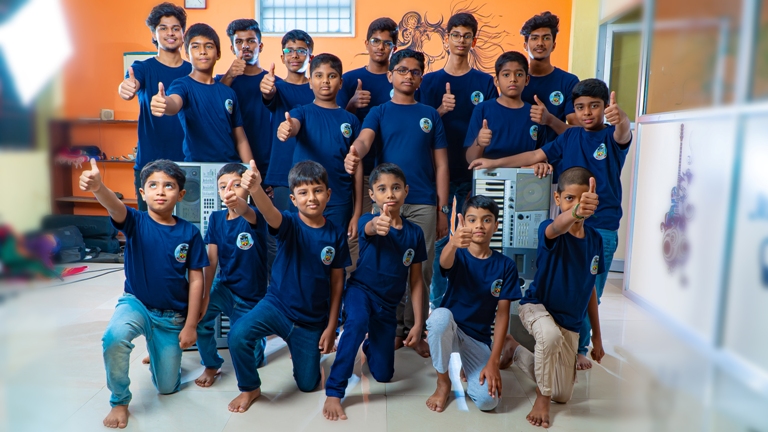In our Yazh Academy, we teach Keyboard with a comprehensive approach that encompasses music theory, technique, and performance. Our experienced instructors guide students through proper hand positioning, finger dexterity, and chord progressions. We emphasize sight- reading skills and help students understand musical notation. With a focus on creativity and expression, we encourage students to explore different genres and develop their own unique playing style. Whether beginners or advanced learners, our goal is to nurture a solid foundation in keyboard playing, enabling students to play with confidence and enjoyment.
About Keyboard
“Keyboard music” refers to music that’s played on any keyboard instrument. This includes instruments like the piano, organ, harpsichord, clavichord, synthesizer, and electronic keyboards. Here’s a brief overview:
1. Piano: Perhaps the most widely recognized keyboard instrument, the piano was developed in the early 18th century. Its music spans across genres from classical to jazz to rock and pop.
2. Organ: This instrument, especially the pipe organ, is most associated with church music, but it’s also used in other genres, including rock and jazz.
3. Harpsichord: Predating the piano, the harpsichord has a plucking mechanism. Its sound is often associated with Baroque music.
4. Clavichord: This is a quieter keyboard instrument that also predates the piano. It has a unique, delicate sound.
5. Synthesizer: Developed in the 20th century, synthesizers can emulate the sounds of other instruments or create entirely new sounds. They’ve been integral to the development of electronic and pop music.
6. Music: Keyboard instruments have been central to Western music’s development. For instance, the piano has a vast solo repertoire from composers like Beethoven, Chopin, and Liszt. It’s also a key instrument in jazz, with figures like Duke Ellington and Bill Evans.
7. Pedagogy: Many start their musical journey with keyboard instruments because they provide a clear, visual representation of musical concepts. Methods and systems, like the Suzuki method for piano, have been developed to guide learners.
8. Role in Ensembles: Keyboards often serve as both solo and accompaniment instruments. In rock bands, for example, keyboards provide harmony and texture, while in classical settings, they might lead or accompany other instruments.
9. Digital Keyboards: Modern digital keyboards often come with various instrument sounds and features like rhythm tracks, teaching tools, and the ability to connect to computers for music production.
The world of keyboard music is vast, spanning centuries of history and numerous genres. Its versatility ensures that keyboard instruments remain central to many musical traditions and innovations.
For Enquiry Offline or Online Classes
Google Reviews
 Durka Devi2023-09-02It's a best academy to learn music in a friendly manner. The teachers are well qualified.
Durka Devi2023-09-02It's a best academy to learn music in a friendly manner. The teachers are well qualified. jothi thomas2023-08-01My son is learning keyboard and my daughter is learning drawing in Yazh academy for 3 years the way the teach is really good and the master is really friendly and kind.
jothi thomas2023-08-01My son is learning keyboard and my daughter is learning drawing in Yazh academy for 3 years the way the teach is really good and the master is really friendly and kind. Ramesh Kumar2023-08-01My Kids are learning music in good atmosphere...
Ramesh Kumar2023-08-01My Kids are learning music in good atmosphere... G Mahalakshmi2023-07-31It is a great place to learn music. Giving chance to each student for improving their individual talent.
G Mahalakshmi2023-07-31It is a great place to learn music. Giving chance to each student for improving their individual talent. Pavithra Srinivasan2023-07-31Lovely team who are very much interested in developing the talent of the children. Happy to be here
Pavithra Srinivasan2023-07-31Lovely team who are very much interested in developing the talent of the children. Happy to be here udhayakumar vedagiri2023-07-31Thanks for moulding kids to be masters in music & finearts
udhayakumar vedagiri2023-07-31Thanks for moulding kids to be masters in music & finearts Annapoorni Gubendra Gupta2023-07-31Good place to learn and excellent staffs...really great !!!Google rating score: 4.9 of 5, based on 107 reviews
Annapoorni Gubendra Gupta2023-07-31Good place to learn and excellent staffs...really great !!!Google rating score: 4.9 of 5, based on 107 reviews

